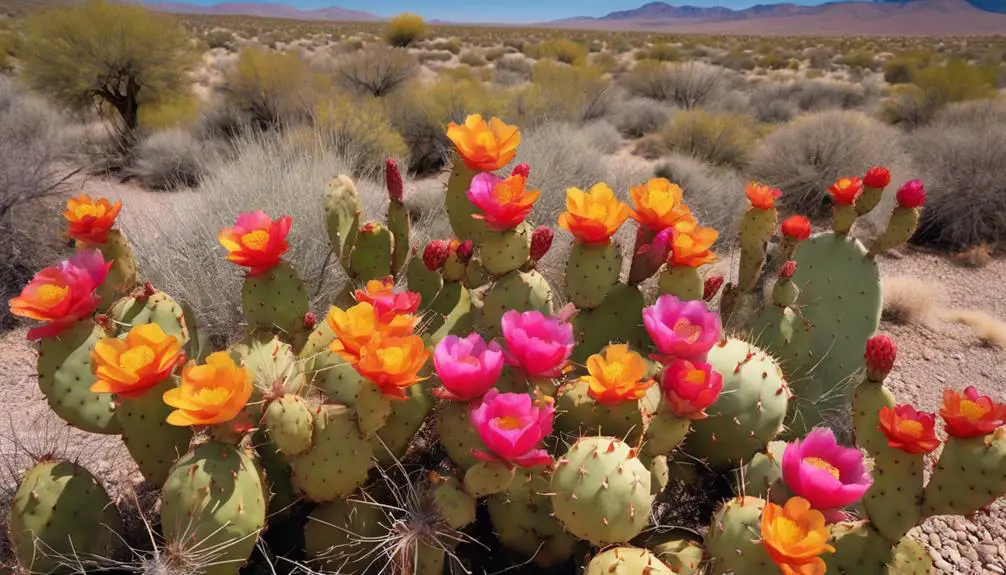As you wander through Nevada’s rugged landscapes, imagine the stark beauty of its deserts meeting the lush bounty of its mountains. Curious about what hidden treasures these diverse terrains hold?
Discover the surprising world of wild edible plants that thrive in Nevada’s varied ecosystems, offering not just sustenance but a glimpse into the rich botanical tapestry of the Silver State.
Nevada’s Diverse Edible Plants
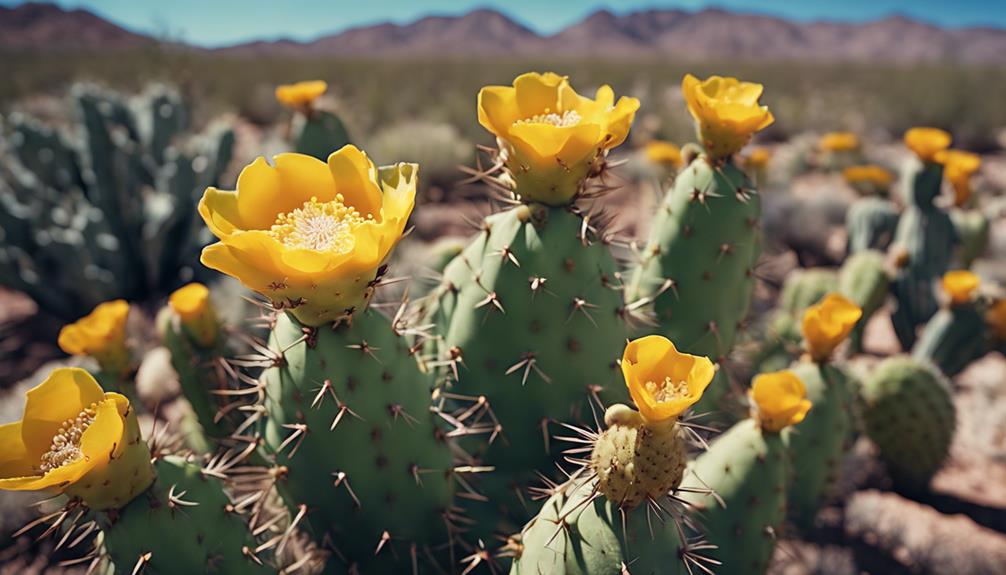
Exploring Nevada’s diverse edible plants offers a tantalizing journey through varied landscapes and culinary possibilities. Nevada’s biomes, divided by distinct swaths of vegetation, host a wide array of wild edible plants waiting to be discovered. From the desert species to mountain and alpine vegetation, the state’s different elevations support a diverse range of edible treasures like Currant, Pinyon, and Manzanita. Foraging in Nevada unveils a rich tapestry of edibles such as Amaranth, Chia, Checkermallow, and Cattail scattered across the various habitats.
The distribution of plants in Nevada spans basins, middle elevations, Aspen, and Fir-Spruce belts, providing foragers with a unique opportunity to explore and harvest a plethora of wild edible plants. Whether you’re drawn to the arid beauty of the desert or the cool serenity of the mountains, Nevada’s edible plants promise an exciting culinary adventure amidst the state’s diverse landscapes.
High Desert Foraging Tips
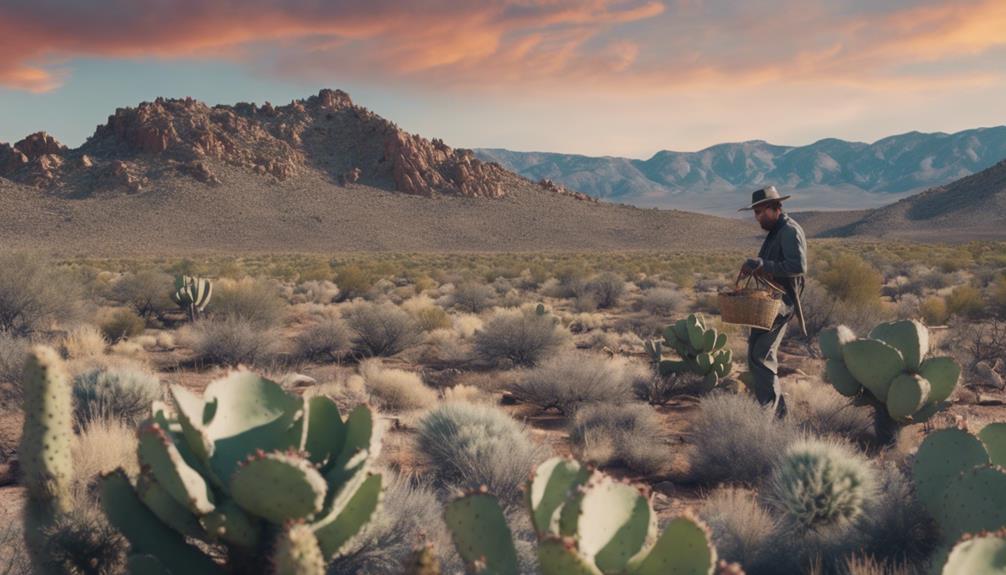
Navigating the high desert foraging terrain in Nevada demands careful plant identification and safety awareness to steer clear of toxic lookalikes. Before venturing out, ensure you familiarize yourself with the key characteristics of edible plants like Chinquapin nuts, Miner’s Lettuce, and wild onions. Research and consult experts to validate your findings and avoid any potential risks associated with misidentification. When harvesting these nutritious edibles, timing is crucial as specific elevations and seasons can impact their availability and taste.
To enhance your foraging experience, engage in community discussions with fellow foragers. These discussions can provide valuable insights into plant identification, harvesting tips, and the benefits of incorporating high desert plants into your diet. Remember to share your experiences and learn from others to build a comprehensive understanding of the local flora. By prioritizing safety, proper plant identification, and participating in community dialogues, you can make the most of high desert foraging in Nevada.
Lush Mountain Edibles
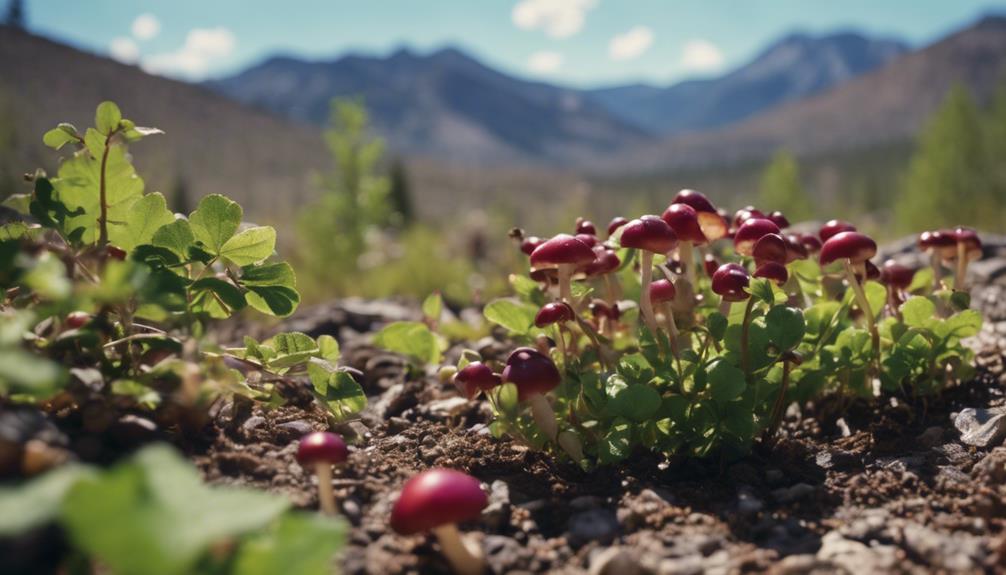
Before you venture further into the mountainous terrain of Nevada, consider the abundance of lush edibles awaiting discovery, such as Sambucus mexicana (Blue Elderberries) and Ribes montigenum (Mountain Gooseberry). These plants offer a rich source of essential nutrients and can be found in the High Sierra region.
In addition to Blue Elderberries and Mountain Gooseberries, wild onions, Miner’s lettuce, Sierra gooseberries, Chinquapin nuts, and Wax Currant are among the diverse edible plants thriving in Nevada’s mountainous terrain. Harvesting Chinquapin nuts, Sierra gooseberries, and Wax Currant can provide a unique culinary experience in the High Sierra.
Exploring the High Sierra for wild edibles like Rose hips, Pine nuts, and Wax Currant offers a sustainable and flavorful way to connect with nature. Embrace the opportunity to discover these flavorful and nutritious mountain edibles during your Nevada wilderness adventures.
Common Nevada Wild Foods
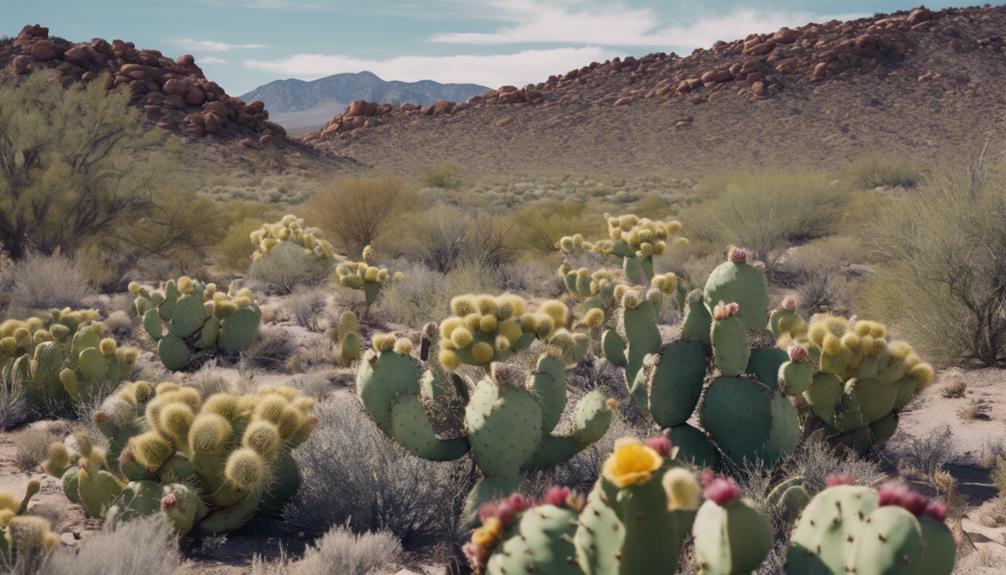
Nevada’s landscape offers a variety of common wild foods, including plants like Cattail, Chokecherry, Chia, and Miner’s Lettuce, each with unique edible uses and preparation methods.
Cattails aren’t only edible but also versatile; you can eat the young shoots, pollen, and roots. Chokecherries, though a bit tart, make delicious jams and jellies. Chia seeds, a superfood, can be sprinkled on salads or mixed into smoothies. Miner’s Lettuce, with its mild flavor, is perfect for fresh salads or as a garnish.
These profiled plants aren’t only edible but also offer medicinal benefits. Cattails, for example, can be used to treat wounds, while Chokecherries are rich in antioxidants. Chia seeds are known for their omega-3 fatty acids, and Miner’s Lettuce is a good source of vitamin C.
Learning about these common wild foods can enhance your foraging experiences and provide a deeper appreciation for Nevada’s natural bounty.
Identifying Edible Plants
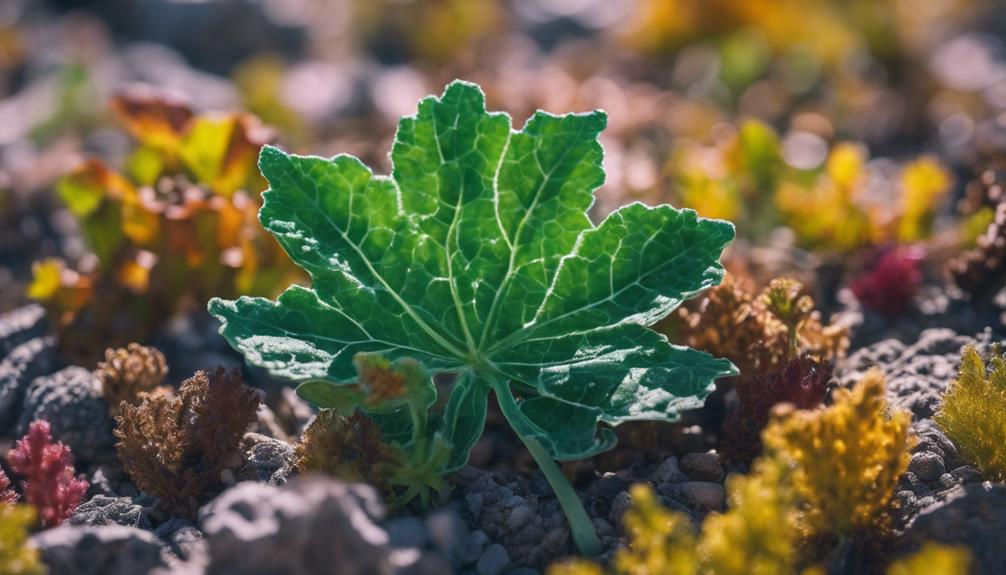
To identify edible plants in Nevada, start by familiarizing yourself with the key characteristics of each species found in different elevations. Foraging wild edible plants like Wild Sierra Onions, Chinquapin nuts, and Rose hips in the High Sierra region can be a rewarding experience. Understanding plant safety tips is crucial to differentiate between safe options and potentially toxic lookalikes. Researching before consumption and utilizing proper harvesting techniques are essential for enjoying these wild edibles safely.
When identifying edible plants, consider their sustenance ratings to gauge their nutritional value. Pay attention to details like leaf shape, color, and arrangement, as well as the appearance of fruits or nuts. Wild Sierra Onions, for example, have a distinct onion-like smell and white flowers, while Chinquapin nuts are spiky and enclosed in a burr. By familiarizing yourself with these characteristics and following plant safety tips, you can confidently forage for and enjoy the diverse edible plants Nevada has to offer.
Harvesting Safety Guidelines
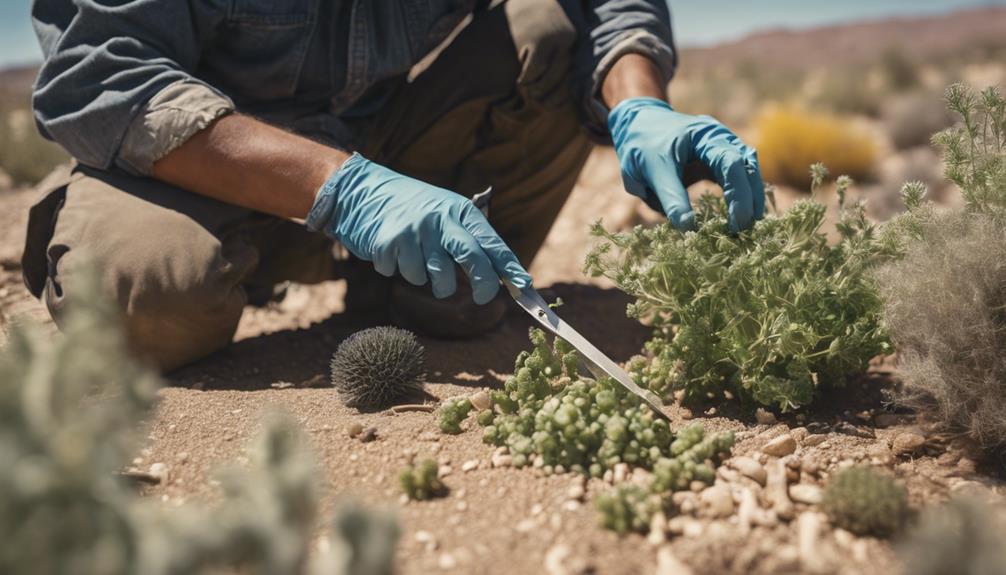
When harvesting edible plants in Nevada, prioritize your safety by following these essential guidelines.
Proper plant identification is crucial to avoid plant doppelgängers that can be toxic. Use all your senses to differentiate between edible and poisonous plants for safe foraging practices.
Additionally, steer clear of harvesting near freeways or industrial areas to avoid contamination from toxic chemicals and car exhaust. Ensure that the plants you harvest are healthy, free from disease, and pests to prevent any health risks.
Some plants in Nevada may cause circulatory and respiratory issues if consumed, underscoring the importance of accurate plant identification. By adhering to these safety measures, you can enjoy foraging for wild edible plants in Nevada while minimizing potential risks to your well-being. Stay vigilant and informed to make the most of your harvesting experience.
Delicious Desert Finds
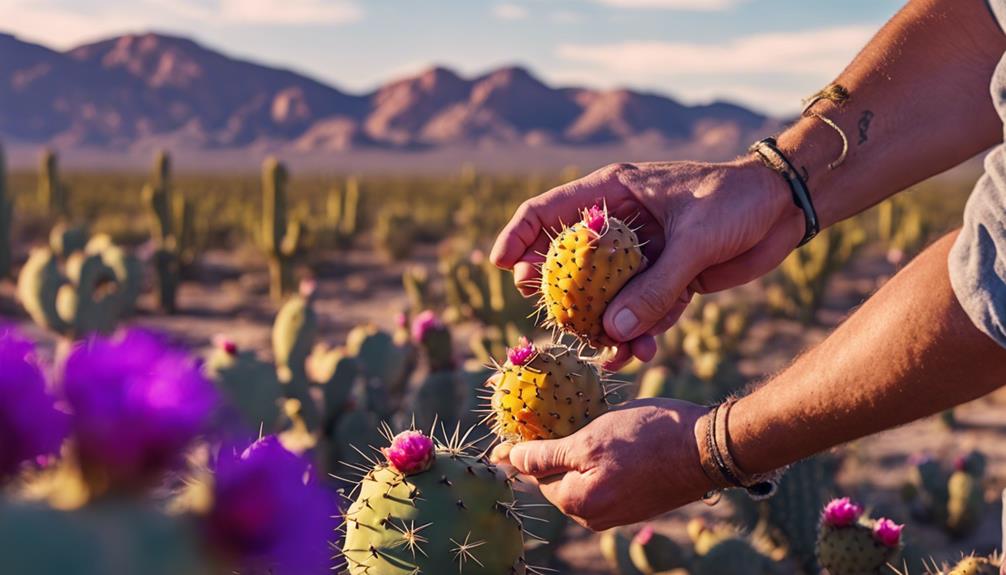
Explore the diverse array of delicious wild edible plants found in Nevada’s desert landscape, offering sustenance, medicinal benefits, and unique flavors for culinary adventures.
Among the common wild edibles in Nevada’s deserts are Cattail, Chokecherry, Evening Primrose, and Checkermallow. These profiled plants have edible uses that can be both delicious and useful. Foraging in Nevada’s unique desert orientation can lead to exciting discoveries of these plants, which have been traditionally used for their culinary and medicinal properties.
Cattail, for instance, isn’t only a versatile food source but also has medicinal uses, such as treating wounds due to its antiseptic properties. Chokecherry is another gem found in the desert, known for its tart flavor that adds a unique twist to various dishes. Evening Primrose, with its delicate yellow blooms, isn’t only visually appealing but also offers its roots, leaves, and seeds for consumption. Checkermallow, on the other hand, is valued for both its edible and medicinal qualities.
The preparation of these plants is detailed in publications, making them accessible for those eager to explore the culinary wonders of Nevada’s desert landscape.
Mountain Range Bounty
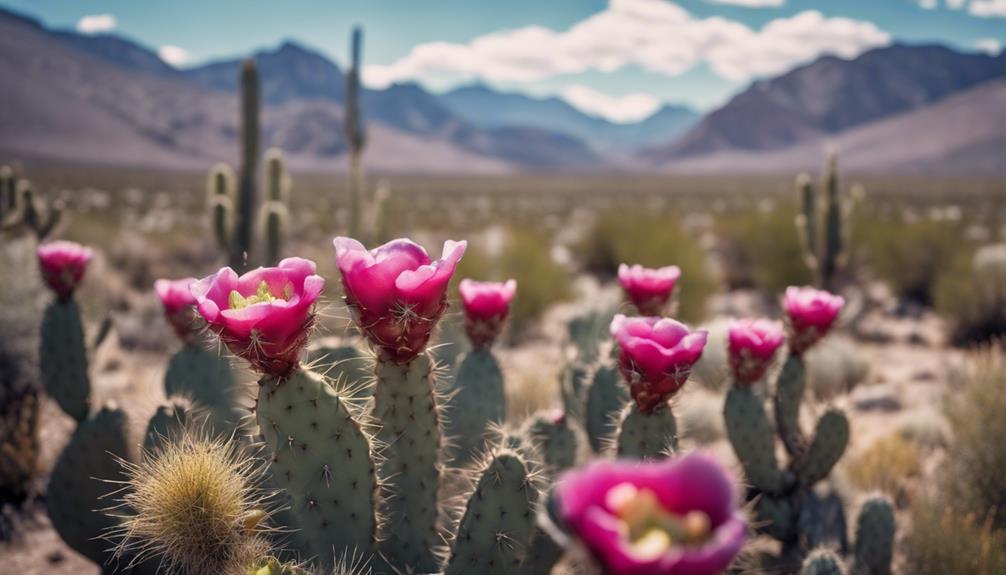
Nevada’s mountain ranges teem with a diverse array of wild edible plants, offering a bounty of flavors and nutrients waiting to be discovered. Plants of Nevada amass a variety of options, with some having low sustenance ratings while others provide substantial nourishment.
Additional categories include Wild Onion, Miners Lettuce, Currant, Lemonade Berry, Indian Ricegrass, and Wax Currant. These mountains hold treasures like Blue Elderberries, Mountain Gooseberry, and Wax Currant.
In the High Sierra regions, foragers can find Miner’s Lettuce, Chinquapin nuts, and Manzanita berries, all packed with nutrition and delightful tastes. Explorers in this area can also enjoy wild onions, Sierra gooseberries, and Pine nuts, each contributing to sustenance and unique culinary experiences.
When venturing into the High Sierra for edible plants, it’s crucial to prioritize safety, conduct thorough research, and carefully identify each species to avoid any potential risks.
Share your experiences, favorite finds, and precautionary tales with fellow foragers to enhance the community’s knowledge and appreciation of the High Sierra’s edible plant bounty.
Foraging in Nevada’s Landscapes
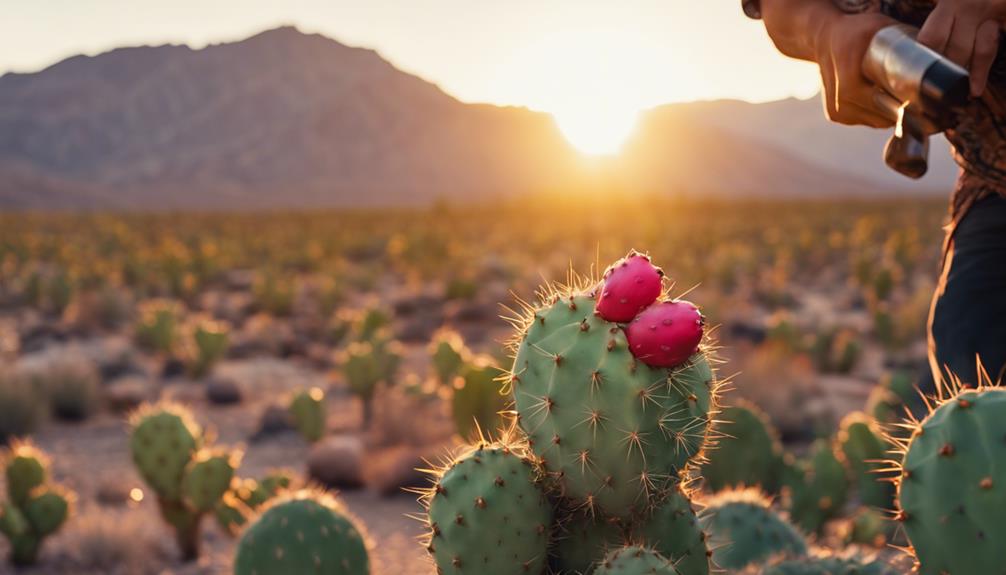
In Nevada’s diverse landscapes, you can find a plethora of wild edible plants waiting to be discovered and harvested. From desert species flourishing in arid regions to mountain varieties thriving at middle elevations, the state offers a rich tapestry of foraging opportunities.
Plants like Currant, Pinyon, and Manzanita dot the varying elevations, providing sustenance for those willing to explore. Each county in Nevada presents a unique collection of edible species, and by utilizing county-by-county map-images and paying attention to collection timing, foragers can efficiently locate and harvest these wild treasures.
Whether you’re drawn to the flavors of Cattail, Chokecherry, or Checkermallow, Nevada’s landscapes promise a diverse array of wild edibles with different tastes and nutritional benefits. So, grab your gear, study the maps, and embark on a culinary adventure through Nevada’s bountiful terrains.
Edible Plants to Watch For
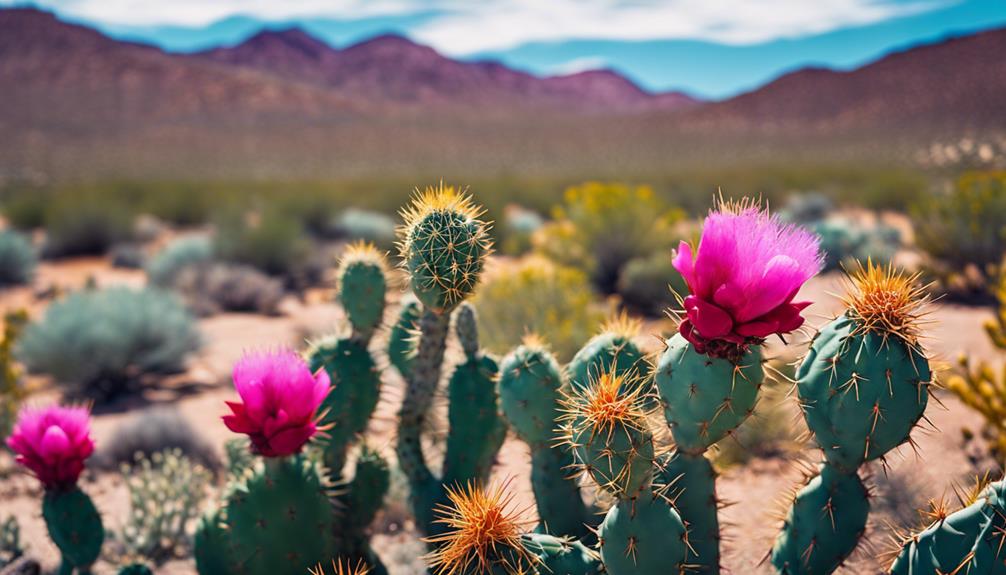
Keep an eye out for Cattail, Checkermallow, Chia, Chokecherry, and Miner’s Lettuce when foraging for edible plants in Nevada. These plants can provide sustenance and are part of the diverse array of Edible Plants of Nevada.
Checkermallow, also known as Sphaeralcea, is a wild edible that offers not only food but also medicinal benefits. Chokecherries, which are abundant in Nevada, can be used to make jams, jellies, and even wine.
Miner’s Lettuce, rich in vitamin C, is a great source of springtime greens and can be found in basins up to 8,200 feet. Chia seeds, derived from the Chia plant, are nutritious and versatile for various culinary preparations.
Additionally, keep an eye out for the Currant plant, which offers flavorful berries that can be enjoyed fresh or used in cooking. When foraging in Nevada, knowing about these edible plants enhances your outdoor experiences and survival skills.
Nevada’s Wild Food Treasures
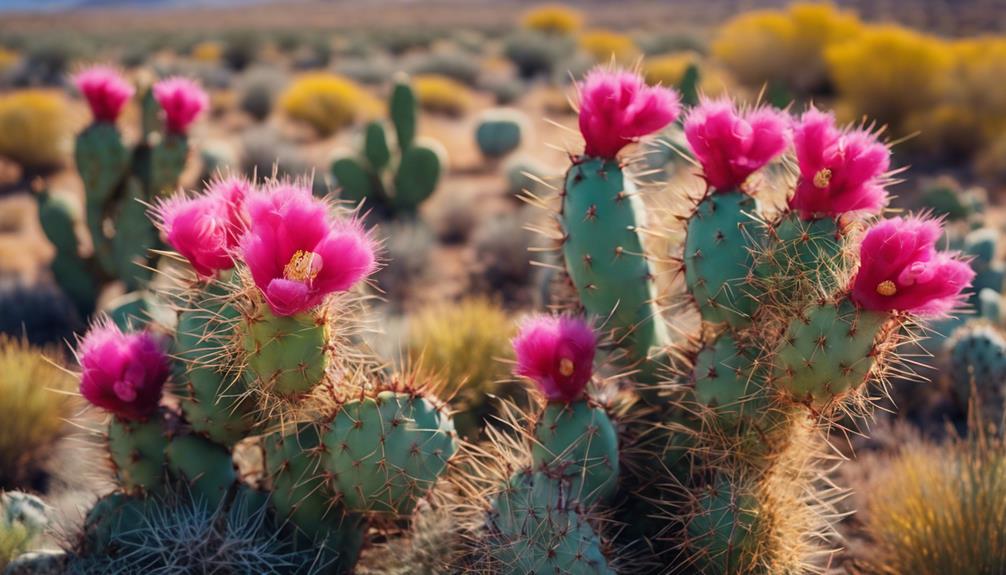
Exploring the wilderness of Nevada unveils a treasure trove of wild food waiting to be discovered. Nevada’s diverse flora offers sustenance through a variety of wild food treasures like Blue Elderberries, Mountain Gooseberries, Wax Currants, and Chinquapin nuts.
High Sierra plant safety tips are crucial for foragers, emphasizing the importance of proper plant identification to differentiate between edible species and their toxic lookalikes. Harvesting Chinquapin nuts, Rose hips, and Miner’s Lettuce in the High Sierra region not only provides nutritious additions to meals but also showcases the culinary versatility of these wild edibles.
Engaging in foraging experiences not only connects individuals with nature but also fosters a deeper understanding of local biodiversity. By exploring the diverse edible flora of Nevada, foragers can enjoy unique culinary experiences while contributing to the preservation of the region’s rich plant life.
Frequently Asked Questions
What Are the Wild Edible Plants in Sierra Nevada?
When foraging in Sierra Nevada, you’ll find Blue Elderberries, Mountain Gooseberries, Wax Currants, and Chinquapin nuts. Remember to watch out for poisonous lookalikes, especially with bulb plants like wild onions. These plants offer essential nutrients for your diet.
How Do You Know if a Wild Plant Is Edible?
To determine if a wild plant is edible, examine key characteristics like leaf shape, color, smell, and growth habitat. Cross-reference features with reliable sources for positive identification. If unsure, consult experts to avoid health risks.
Are There Edible Plants in the Desert?
In the desert, you can find edible plants like Creeping Hollygrape, Chokecherry, and Cattail. Some desert plants, such as Amaranth, Beeplant, and Biscuitroot, are also edible. They offer varying levels of nutrition.
What Leaves Are Edible in the Wild?
You can find a variety of edible leaves in the wild. Miner’s Lettuce, Wild Sierra Onions, and Dandelion greens offer flavors and nutrients. Incorporate them into your diet for a diverse range of tastes and textures.

